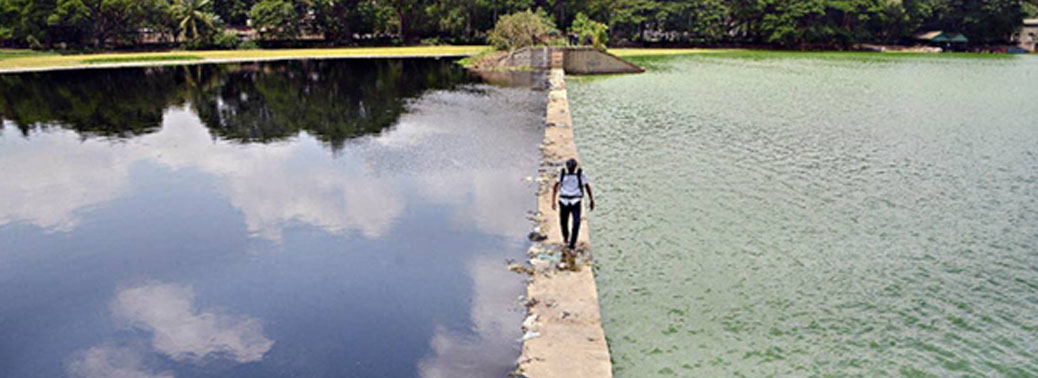ULSOOR LAKE
28, Feb 2020

Prelims level : Disaster Manage Unit
Mains level : GS-III Conservation, Environmental Pollution and Degradation, Environmental Impact Assessment.
Context:
- Recently, the National Green Tribunal (NGT) has directed the constitution of a joint committee to take samples of water from Bengaluru’s Ulsoor lake and its neighbouring areas.
About the Components of Water Analysis:
- Biochemical Oxygen Demand (BOD)
- It is the amount of dissolved oxygen used by microorganisms in the biological process of metabolizing organic matter in water.
- The more organic matter there is in sewage and polluted bodies of water, the greater the BOD; and the greater the BOD, the lower the amount of dissolved oxygen available for higher animals such as fishes.
- It will be greater when more organic matter
- The main reasons for treating wastewater prior to its discharge into a water resource is to lower its BOD and thereby lessen its demand from the streams, lakes, rivers, or estuaries into which it is released.
- Chemical Oxygen Demand (COD): It is a method of estimating how much oxygen would be depleted from a body of receiving water as a result of bacterial action.
- The pathogen present in the water is determined with indirect evidence by testing for an “indicator” organism such as coliform bacteria.
- Coliform Bacteria: It is bacteria that are always present in the digestive tracts of animals, including humans, and are found in their wastes. They are also found in plant and soil material.
- Presence of Heavy metals are known to induce cardiovascular diseases, developmental abnormalities, neurologic and neurobehavioral disorders,
- diabetes, hearing loss, hematologic and immunologic disorders.
About Ulsoor Lake:
- It is part of a network of hundreds of reservoirs in Bangalore built by the Gowda Kings to provide the city with a sustainable potable water supply. The lakes were connected by stormwater channels known as Nalahs.
- It is one of the largest lakes remaining of this network, suffering from environmental challenges including poor water quality, degraded landscape and ecology, poor public realm, as well as the abundance of surrounding vehicular traffic.
The National Green Tribunal:
- It has been established on 18.10.2010 under the National Green Tribunal Act 2010 for effective and expeditious disposal of cases relating to environmental protection and conservation of forests and other natural resources including enforcement of any legal right relating to environment and giving relief and compensation for damages to persons and property and for matters connected therewith or incidental thereto.
- It is a specialized body equipped with the necessary expertise to handle environmental disputes involving multi-disciplinary issues. The Tribunal shall not be bound by the procedure laid down under the Code of Civil Procedure, 1908, but shall be guided by principles of natural justice.
- The Tribunal’s dedicated jurisdiction in environmental matters shall provide speedy environmental justice and help reduce the burden of litigation in the higher courts.
- The Tribunal is mandated to make and endeavour for disposal of applications or appeals finally within 6 months of filing of the same.
- Initially, the NGT is proposed to be set up at five places of sittings and will follow circuit procedure for making itself more accessible. New Delhi is the Principal Place of Sitting of the Tribunal and Bhopal, Pune, Kolkata and Chennai shall be the other four place of sitting of the Tribunal.






